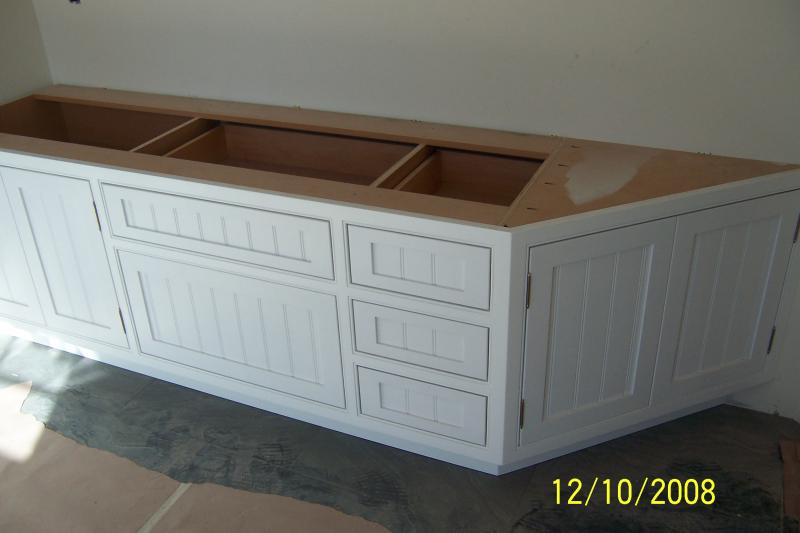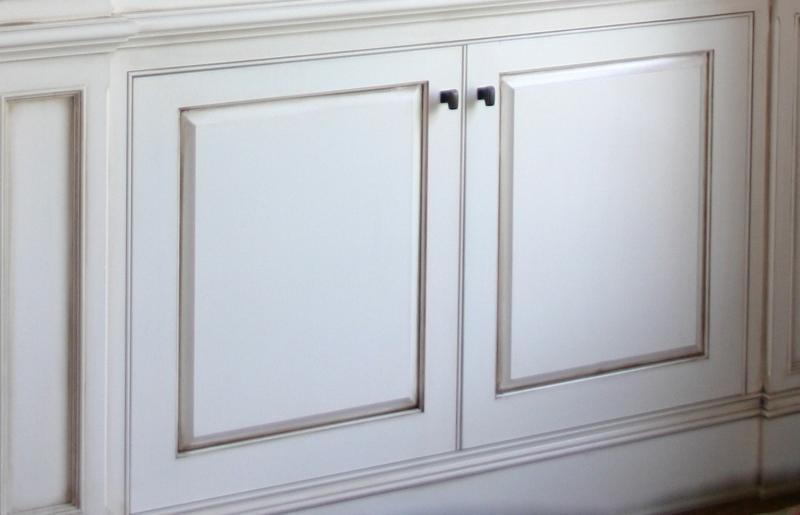Beaded Face-Frame Double Door Debate
A discussion of how to detail the point where beaded double doors meet in the center. March 3, 2009
Question
On a pair of doors without a stile between them and beaded FF's, do you add a bead to the edge of one of the doors where they meet?
Forum Responses
(Cabinetmaking Forum)
From contributor D:
I have seen furniture like this but the bead is applied to the door. I just finished a wood panel library room that the designer made me put the bead on the doors and panels. I don't recommend it, if you could use butt hinges like they used on the old furniture it might not be as bad. Of course he wanted hidden.
I used thick door hinges but still had problems with clearances. The gap I had to leave between doors was more than I like.
From contributor M:
Putting the bead on
cabinet doors instead of the face frames has several advantages and effectively looks the same when the doors are closed. It's much easier to put on the doors since you don't have to run a molding around the cabinet openings (you can put it on the door edges without a molding if you are handy with a small router) and the bead is out of the way when objects are being put into the cabinet so that the bead doesn't get beat up as much over time.
From contributor U:
I won't bash the bead on door idea as a purist, but aren't you limited to a mitered door with this approach?
From contributor K:
Here is what a beaded pair should look like.

Click here for higher quality, full size image
From contributor M:
As a matter of fact, I haven't done a beaded job for a while, and have mainly done frameless cabinets recently. The router setup I used was a beading bit with bearing in a laminate trimmer router run around the perimeter of the door with the base of the router laying on the edge of the door, not the face. I would have to do a little finish-up work with a carving tool at each corner, but this was quite fast when you got the hang of it. I didn't have to run the bead on all four edges with this method, so I could have the meeting edges of door pairs square if I wished, and I could use the process on any type of door frame construction, cope and stick or mitered.
Of course, if you want to use a mitered door, you could run the bead first on the frame stock and automatically have perfect corners. You could even omit pre-running the bead on the frame stiles where door pairs meet; you would just have to do a little hand work where those stiles met the door's beaded rails to run the bead through the miter.
I have to tell you guys, honestly, the kitchens I did with this method looked just as good and authentic as those done traditionally with beads on the face frames - at least to my customers.
From contributor W:
I always make a bead on one door style. I prefer the look personally. This is what a beaded double door should look like, otherwise both style together tend to look too wide and are not proportional.

Click here for higher quality, full size image
From contributor B:
I like the look of that, is it just run on one door at random, or do you make one door wider or something?
From contributor W:
It is run on one door. You will need to make one of your inner styles wider and then run the bead on it so that the bead lines up in the middle of the dbl opening.

